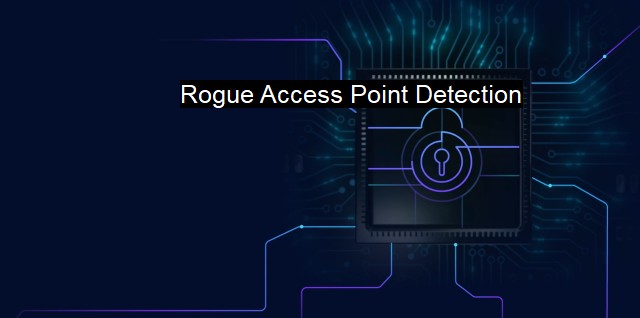What is Rogue Access Point Detection?
Rogue Access Point Detection: Safeguarding Organizations in Today's Complex Cybersecurity Landscape
Rogue Access Point Detection is a critical component of cybersecurity and antivirus systems. The increasing connectivity of the world has led to a rising prevalence of wireless devices and networks, which present varying degrees of vulnerabilities that can be exploited by cyber-criminals. One of the well-known threats is Rogue Access Points (RAPs), making Rogue Access Point Detection and mitigation an essential factor in maintaining a protected and secure network environment.To fully understand what Rogue Access Point Detection is, it is necessary firstly to get clear on what Rogue Access Points are themselves. As the name suggests, Rogue Access Points are wireless access points that have been installed on a secure network without explicit authorization from the local network administrator. They could result from an innocent employee setting up a personal connection point without understanding the security implications or be deliberately created by malicious actors intending to bypass network security protocols and gain unauthorized access to the network itself.
A Rogue Access Point's existence poses a significant threat to cybersecurity because it creates a backdoor entryway to a securely guarded system. Assuming that most security measures have been implemented at the known points of access, Rogue Access Points bypass these security layers, and the network becomes just as vulnerable as its weakest link. Cybercriminals can exploit these access points and gain unauthorized access to sensitive data, install malicious software, or even take control of the network infrastructure.
Because of the significant risks posed by RAPs, their early detection and mitigation are essential in protective network security measures - hence the need for Rogue Access Point Detection. Applying various modalities, Rogue Access Point Detection systems work by constantly scanning and monitoring the wireless spectrum for access points and comparing found access points to a list of those authorized. Any unauthorized access point discovered during this process is classified as a rouge access point.
The effectiveness of Rogue Access Point Detection takes more than just identifying an unknown connection. It also needs to analyze network traffic and identify the data types being shared. Advanced methods go further to classify the potential threat levels of rouge access points, providing tools that allow network administrators to make quick decisions on whether and how to react.
Evidently, Rogue Access Point Detection plays an integral role in the overall cybersecurity strategy and aids in threat prevention, detection, and response. By rooting out such vulnerabilities preemptively, Rogue Access Point Detection contributes to the overall robustness and resilience of network infrastructure.
Despite its importance, Rogue Access Point Detection's implementation presents its challenges, especially in large organizations or networks spanning vast spaces or multiple buildings. Logistical and practical difficulties arise from the complexity and scale of wireless networking, making consistent detection and monitoring of unauthorized access points challenging. In such situations, reliance on specialized equipment or software becomes critical to enhancing the detection capabilities.
Rogue Access Point Detection is a vital area in the broader landscape of cybersecurity and antivirus protection. Its relevancy continues as an increased number of devices are becoming inter-connected, emphasizing the great import placed on safeguarding network infrastructure. Functional measures against Rogue Access Points, their detection, management, and countermeasures, are thus indispensable for today's cybersecurity requirement. Rogue Access Point Detection shines as the first step toward, and a substantial player in, keeping wireless networks safe from harmful and unauthorized activities. Thereby, Rogue Access Point Detection stands as a vital and proactive measure in any comprehensive cybersecurity strategy.

Rogue Access Point Detection FAQs
What is a rogue access point in cybersecurity?
A rogue access point is an unauthorized wireless access point that can potentially compromise the security of a network, by allowing unauthorized access to sensitive data.How can I detect a rogue access point in my network?
You can detect a rogue access point by using specialized software or hardware that scans the network for suspicious wireless signals. This process is known as rogue access point detection.What are the risks associated with a rogue access point?
A rogue access point can compromise the security of a network by allowing unauthorized access to sensitive data, providing a gateway for attackers to launch attacks, and creating a backdoor for malware to spread.How can I prevent rogue access points from being deployed in my network?
To prevent rogue access points from being deployed in your network, you can implement security measures such as network segmentation, strong password policies, and regular network audits. Additionally, it's important to educate users on the importance of network security and the risks associated with unauthorized wireless access points.| | A | | | B | | | C | | | D | | | E | | | F | | | G | | | H | | | I | | | J | | | K | | | L | | | M | |
| | N | | | O | | | P | | | Q | | | R | | | S | | | T | | | U | | | V | | | W | | | X | | | Y | | | Z | |
| | 1 | | | 2 | | | 3 | | | 4 | | | 7 | | | 8 | | |||||||